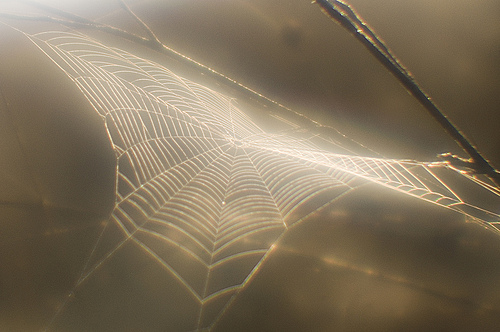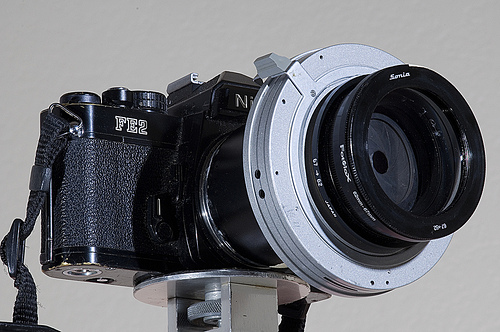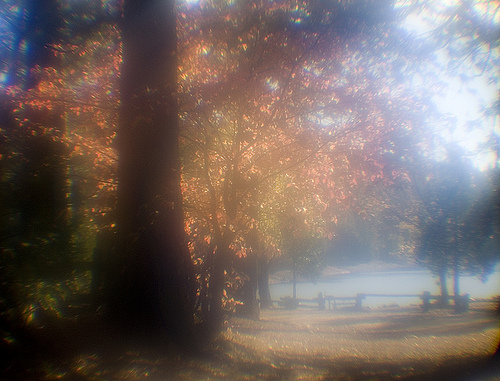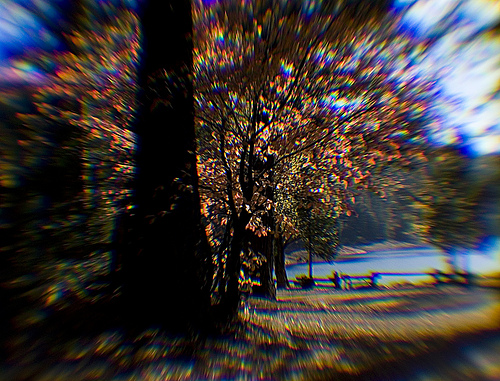
The Monocle
There's something about the monocle and its soft glow that I have always liked. Shot in monochrome, there is an
unmistakable vintage feel. Shot in color, there is a dreamlike quality.
It's the simplest of lenses: a single positive meniscus (one side convex and the other concave with an overall
positive focal length to focus light).
The simple explanation regarding the optics behind the mystery is that a positive meniscus has more spherical aberration
(to give you that "glow") than a biconvex lens with the same focal length and aperture. However, if the stop is
correctly sized and positioned, it can have less off-axis blur than the corresponding biconvex lens. Moreover, the amount of
glow can be controlled by stopping down the lens. Using a 35 mm format, the glow is quite pronounced at f/ 4 but grows much
more subtle by f/ 8. This is why, many many years ago, the meniscus was called the landscape lens and also why it was
used over the years in many cheap production cameras.
Constructing a Functioning Lens
In trying to make a simple focusable monocle with variable aperture for my DSLR, I was faced with the usual problem:
lens + focuser + iris = too much distance from the sensor to achieve focus at infinity.
Yes, I could easily put together a 120 mm monocle that would work with my bellows as a focuser. Or I could also use
the bicycle inner tube approach to building a focuser, but that's not what I wanted. I wanted a lens in the 35 - 50 mm
range that had a real focuser and real aperture control. I wanted something that worked like a real lens!
(I don't believe I just said that. Oh well, it's true.)
I decided my best option was to use the focuser from an old junk lens. In this case, that happened to be an old Tamron
28-80 with the optics removed. After cutting off the rear piece as close to the focuser threads as possible and then
attaching a nikon mount using super glue, I had a mounted, functioning focuser which could position a lens about 70 mm
from the sensor. That was still too long for the 35 - 50 mm focal length I wanted.
I needed to resort to the usual trick of adding a negative lens up front to increase the back focal length. So instead
of one element, I would need two: A positive meniscus with a focal length between 40 and 45 as the rear element with its
convex side facing the sensor, and a negative lens with a focal length somewhere in the -80 to -300 range in front of the
first element and at a distance that provides the required back focal length. The iris is probably best placed between the
two elements at about 10 mm in front of the rear element.

The Lens
Once again, theoretical design ran smack into the realities of amateur lens building. I simply didn't have a positive
meniscus lens in the required focal length and diameter, and there wasn't anything suitable available from Surplus Shed.
My only choice now was to complicate things even further and use three elements rather than two. Instead of a having a
rear element made from a single positive meniscus, I found a combination of two positive meniscus lenses (+66 and +140)
that gave me what I needed. In front of that combination, I added a nice 10-blade iris from an old Ilex shutter. Up front,
I added a -105 negative meniscus which I was able to adjust so that the lens came to focus at infinity exactly when the focuser
was fully retracted.
Here's a view of the completed monster.

The Results
Having a homemade lens with easy to use focusing and aperture control is a nice treat. The lens functions the way
I expect a lens to function.
I measured the focal length at 45 mm and the focal ratio at about f/ 2 with the iris wide open. At f/2 the images were
extremely soft and low in contrast. At about f/ 4 the contrast increased enough to produce the nice glowing images that
I expect from a monocle.

Stopped Down
As I closed the iris further, the glow continued to decrease. However I also noted an unexpected change. There is a big
increase in off-axis blur and false color. I shot the same scene at about f/ 16
It's an interesting effect, however it's not what I was intending with this lens. I suspect that the iris is not positioned
correctly. I haven't run this through any lens design software yet, but I suspect that the iris should be much closer to the rear
elements. Once again, realities of amateur lens making show up. The size of my Ilex shutter doesn't allow me to mount it any
closer to the rear elements.
At some point I will find a "lower profile" focuser, the correct positive meniscus, and a properly sized iris.
For now I'm happy with the results of my latest, easy-to-use lens.



